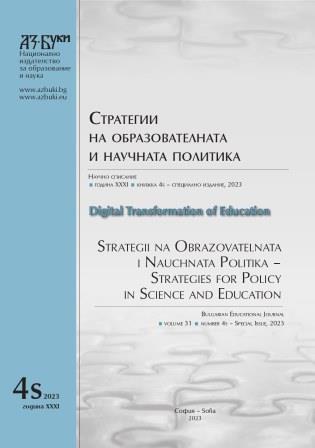The Role of the Universities as Accelerators for the Integration of the STEM Learning Methods in the Primary and Secondary Schools
The Role of the Universities as Accelerators for the Integration of the STEM Learning Methods in the Primary and Secondary Schools
Author(s): Georgi Hristov, Ivan Beloev, Plamen Zahariev, Georgi GeorgievSubject(s): Social Sciences, Economy, Education, National Economy, School education, History of Education, Educational Psychology, State/Government and Education, ICT Information and Communications Technologies, Sociology of Education, Distance learning / e-learning, Pedagogy
Published by: Национално издателство за образование и наука „Аз-буки“
Keywords: STEM; primary education; secondary education; methodology; block-based programming; robotics; micro:bit; micro:maqueen
Summary/Abstract: The digital transformation of the industrial domains and the everyday human life has led to new ways of entertainment, safer working environments, better transport technologies, global connectivity and many other social and economic benefits, but it has also caused some indirect and unexpected consequences for the labour market – the emergence of numerous never-before-seen professions, which are closely related to the information and communication technologies. This has led to a sudden demand for large number of workers with knowledge and experience in the area of the digital technologies – something for which the educational systems of many countries were not adequately prepared and were caught by surprise. In order to meet the challenges of this digital revolution, numerous plans, programmes and mechanisms were created for the rapid and large-scale digitization of all levels of the educational system. Unfortunately, one of the most vital requirements for the introduction of the innovative teaching methods in the primary and secondary schools was significantly underestimated – the lack of sufficient time and capabilities to train and prepare the teachers. It is exactly here, where the role of the universities stands out, as they can respond appropriately to this need and they can prepare the teachers for the new digital challenges much faster and easier. The universities can also act as mediators between the business sector and the primary or secondary education institutions and can help them easily acquire financial or material support for the introduction of STEM classes in the educational processes. In this publication, we briefly discuss the STEM educational methods, their main goals and their primary characteristics. The article then presents a methodology for the rapid large-scale integration of these learning methods in the primary and secondary schools with the help and with the involvement of the higher education institutions. The last part of this publication presents in details the pilot initiative of the University of Ruse „Angel Kanchev“ for the introduction of classes in robotics and block-based programming in the primary and secondary schools in the Municipality of Ruse.
Journal: Стратегии на образователната и научната политика
- Issue Year: 31/2023
- Issue No: 4s
- Page Range: 74-88
- Page Count: 15
- Language: English
- Content File-PDF

